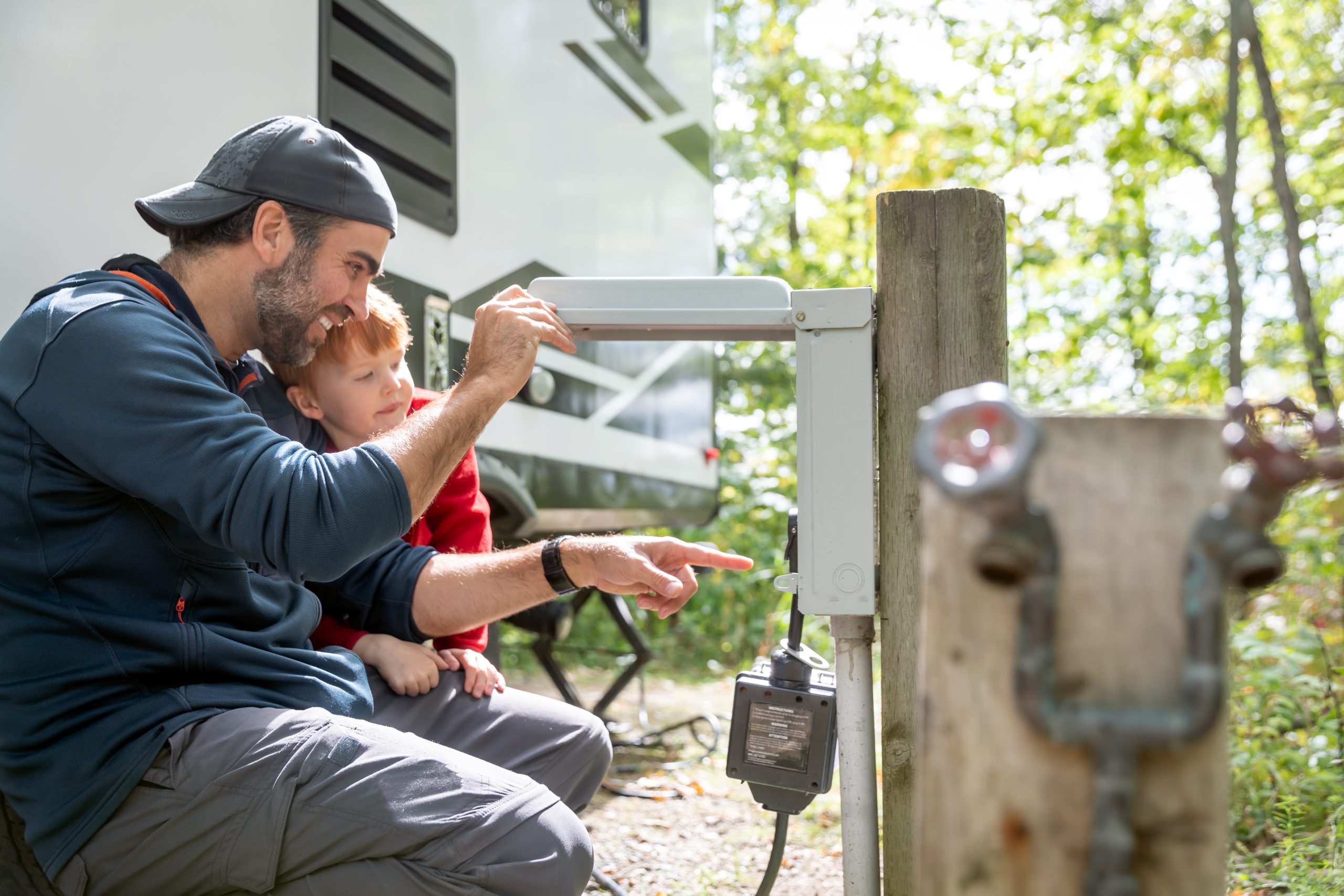After a long, cold winter, Hoosiers can’t wait to get outdoors during longer days of sunshine to begin long, put-off chores in the yard. But before heading out with a ladder or a shovel, looking up and down for electric power lines and equipment might save your life — or at least extend the lives of trees and other greenery you intend to plant.
“Ladders present safety issues no matter at which end you stand,” said Rick Coons, CEO at Indiana Electric Cooperatives. “Anyone who’s ever scaled a ladder has thought about a fall from the top, but there’s a danger when we’re moving the ladder on the ground that we might not immediately consider: overhead power lines.”
Here are important points to consider with overhead power lines:
- Look up and around. Always be aware of the location of overhead power lines. Ladders and other long items, like pool cleaning tools, should be carried horizontally whenever possible.
- Keep equipment and people at least 10-15 feet from lines. Never trim trees near power lines. Don’t place a ladder where it could fall into a power line.
- Never approach power lines knocked down by a storm, or try to move broken tree limbs or branches that might be entangled in power lines. Power lines, though damaged and silent, can still be fully energized and dangerous.
Overhead is not the only place electric power lines cross our yards or bring electric service to the meter on the house. In many suburban neighborhoods, buried power lines have become the norm. While this means there are no poles and wires running overhead to worry about, they still require special consideration:
- Underground power lines require those green boxes, called pad-mount transformers. Though it may be tempting to hide them with landscaping, please don’t. Your electric cooperative might have to open that equipment during a power outage or for routine maintenance.
- Keep shrubs and structures at least 12 feet from the “door” of the box, and at least 3 feet from the sides.
- If landscaping is too close, inadequate air circulation can cause equipment to overheat and fail. Plantings might have to be cut and removed.
- Keep the meter on your house visible and accessible, too.
- Never allow children to play on or around the pad-mounted transformers. They contain electrical equipment with high voltage inside.
- Do not plant near underground utility services. Tree roots can grow and interfere with underground pipes, cables and wires. Future repairs to these facilities also could damage the health and beauty of nearby plants and trees.
- At least a few days before planting, call 811, the underground utility locator service, to come out and mark the locations of underground utilities.
Indiana Electric Cooperatives also wants consumers to remember to never use electric yard tools with a power cord when the ground is wet, and always make sure your power tools are plugged into an outlet with a ground fault circuit interrupter (GFCI).
Sources: Electrical Safety Foundation, NRECA, Electric Consumer




